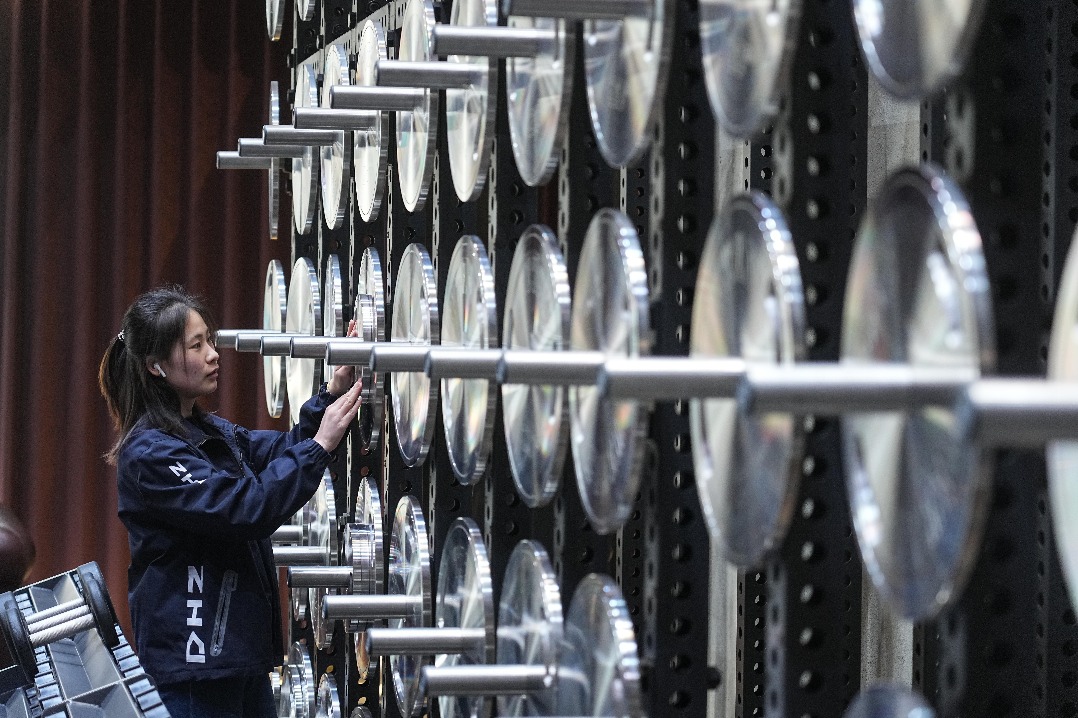China, East Asian partners explore marine opportunities






China is willing to work with other East Asian countries to grow the maritime economy and cultivate more modern ocean cities to bolster its green and high-quality growth, said government officials and economists.
Since East Asian countries, including China, the Republic of Korea and Japan, have a high degree of economic integration and strong industrial complementarity, there is huge potential for ocean-linked economic cooperation, said Wang Hong, vice-minister of natural resources and head of the State Oceanic Administration.
Involved sides should further integrate their growth strategies for the maritime economy, jointly support the development of new formats in this area and inject new impetus into their economic recovery, Wang said at the opening ceremony of the 2022 East Asia Marine Cooperation Platform Qingdao Forum, held in Qingdao, Shandong province, last week.
The Intergovernmental Oceanographic Commission of the United Nations Educational, Scientific and Cultural Organization announced in late June that it had approved the establishment of the UN Ocean Decade Collaborative Centre on Ocean-Climate Nexus in Qingdao, the first of its kind in China and one of the first of six across the world.
The facility will be located in Qingdao's West Coast New Area and is designed to provide Chinese solutions to global ocean governance by promoting the implementation of major science projects under the UN framework, such as the Ocean to Climate Seamless Forecasting System.
The Ocean to Climate Seamless Forecasting System was jointly initiated by the First Institute of Oceanography of China's Ministry of Natural Resources, 34 oceanographic and climate research institutions, and three international organizations from 25 countries.
It is expected to enhance observation capabilities, develop a multi-hazard early warning system and exchange advanced knowledge and theories on ocean science and ocean management with the younger generation.
With Shanghai and Shenzhen deploying more resources to enrich their maritime economies, and form marine-related industry clusters, Fan Gang, director of the Beijing-based National Economic Research Institute, said more Chinese cities such as Tianjin; Xiamen, Fujian province; and Ningbo, Zhejiang province, have enormous potential to transform to be more modernized ocean cities.
Although China has built a heavy presence in most fields of the marine industry, including port, shipping and fishing operations, marine energy and biology, its efficiency, restricted by technologies, is not high enough, he said, noting it is vital for capable Chinese coastal cities to adopt digital technologies, grow ocean-related new energy and trade in services to better compete with other global cities of this kind.
"The marine tourism industry should be a new focus of their efforts, including the tourism of coastal cities and international cruise services in coming years, he said.
Aiming to gain more technology assistance, Shenzhen, a major city in Guangdong province, will build two ocean science and technology innovation centers in its eastern and western areas, and improve its industrial chain to boost the agglomeration of marine industries, according to a plan issued by its municipal government in April.
According to a guideline to develop its maritime economy over the 14th Five-Year Plan (2021-25) period, Zhejiang province plans to build Ningbo and Zhoushan into maritime hubs, which can concentrate advantages and resources to develop the maritime economy.
New marine industries are entering the fast lane thanks to China's endeavors to ride the wave of technological innovation. Between 2016 and 2020, emerging industries including seawater desalination, marine energy and marine biopharmaceutics saw their growth in added value average more than 11 percent annually, said Wei Zhiqiang, vice-president of Qingdao-based Ocean University of China.
Zhang Weiwei, dean of the China Institute of Shanghai-based Fudan University, said China's unique geographical location and landscape, with its vast and a continental passage connecting the whole of Eurasia, mean that it can "strike a balance between the growth of its western inland and eastern coastal areas".

































